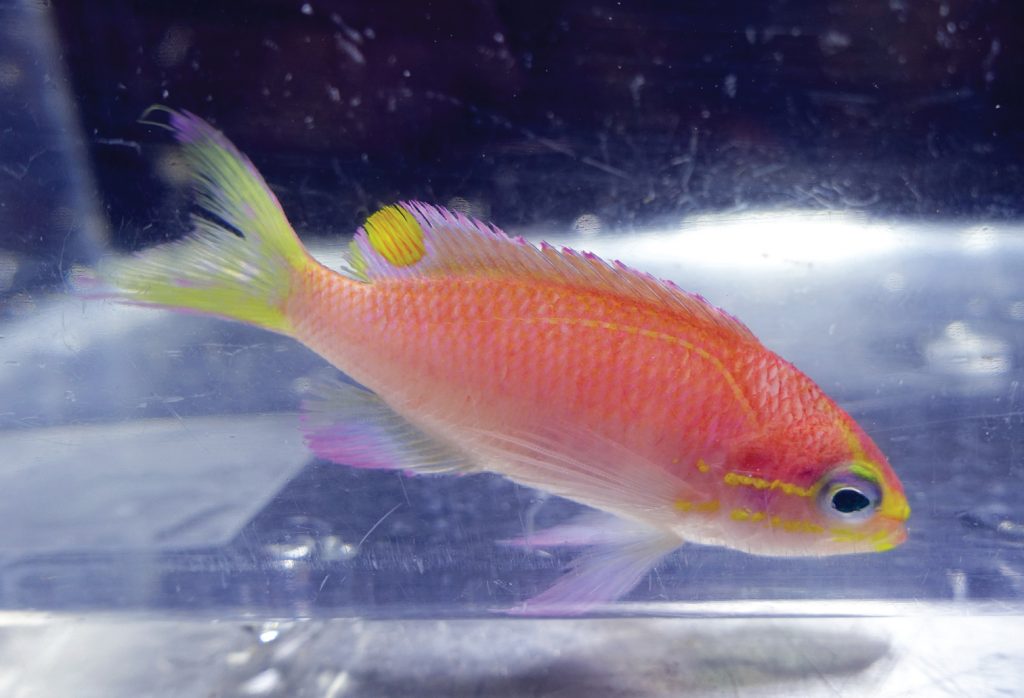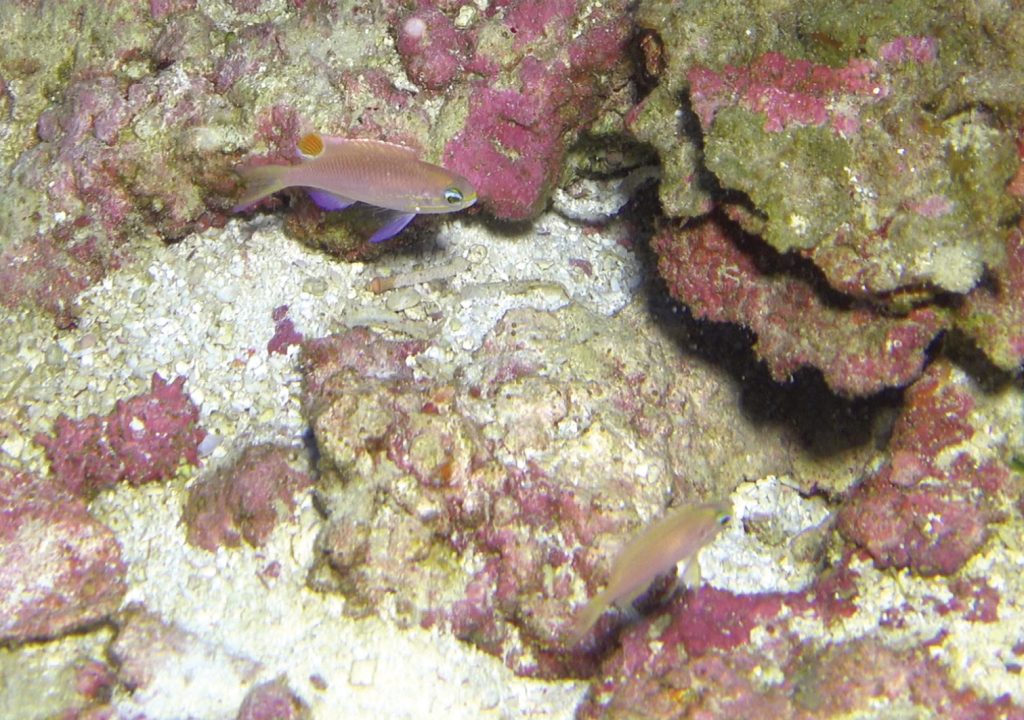As Barack Obama’s presidency comes to a close, one of his most lasting legacies will no doubt be his commitment to environmental conservation. Earlier this year, his home state of Hawaii saw the creation of the Papahānaumokuākea Marine National Monument, a vast marine conservation area (currently the largest in the world) encompassing the remote reefs stretching northwest of the main Hawaiian islands. And it was here that mesophotic explorers Dr. Richard Pyle and Brian Greene collected a hitherto unknown species of anthias from reefs 300 feet deep and named today in honor of our departing president—Tosanoides obama.
Obama’s Anthias is just the third species to be described in its genus, with the others (T. flavofasciatus & T. filamentosus) being restricted to the deeper reefs of the Northwest Pacific and seldom seen in the aquarium trade. This interesting biogeographic similarity with Japan seems to be a common theme with many of the fishes from this region. Deeper-water examples include sister species like Genicanthus semifasciatus and G. personatus, as well Pseudanthias caudalis and P. thompsoni. More shallowly, Centropyge interrupta and Zebrasoma flavescens are also shared to some extent.
Measuring in at just 85mm in the largest male, T. obama is the smallest known member of the genus. It is instantly recognizable thanks to a prominent red spot in the dorsal fin of males, but, aside from that marking, this is a fairly mundane species as far as deepwater anthias go, mostly lacking in the chromatic panache which makes its closest relative, T. flavofasciatus, such a holy grail among rare fish collectors. Genetically, this fish was quite distinct, differing far more from its congeners than what is normally seen among closely related taxa, suggesting an evolutionary split that occurred some 5 million years ago.
Specimens were observed along limestone bottoms—the submerged remnants of Hawaii’s original islands, long since lost to the waves—a habitat riddled with small holes which this reclusive fish uses to dart in and out of. In these waters, ecosystems can be entirely dominated by endemic taxa (e.g. Pseudanthias thompsoni, Chromis strusakeri, Caprodon unicolor, Genicanthus personatus and the recently described Prognathodes basabei). Recreating this in an aquarium would not be cheap, and, for many of these species, including Obama’s Anthias, quite impossible, as several of these species have yet to be collected for aquarists.
It’s great to see the conservation efforts of President Obama recognized in this way. Of course, one can’t help but wonder if our President-elect Donald Trump will ever warrant a similar honor. Will his term in the presidency continue Obama’s stewardship, or will our ecosystems instead be sold off piecemeal to the highest bidders. Sadly, this latter scenario seems the more likely given his appointments to key governmental bodies, and I suspect we will not see the day when Trump has a golden-hued anthias to call his own.
Pyle RL, Greene BD, Kosaki RK (2016) Tosanoides obama, a new basslet (Perciformes, Percoidei, Serranidae) from deep coral reefs in the Northwestern Hawaiian Islands. ZooKeys 641: 165-181. https://doi.org/10.3897/zookeys.641.11500











0 Comments